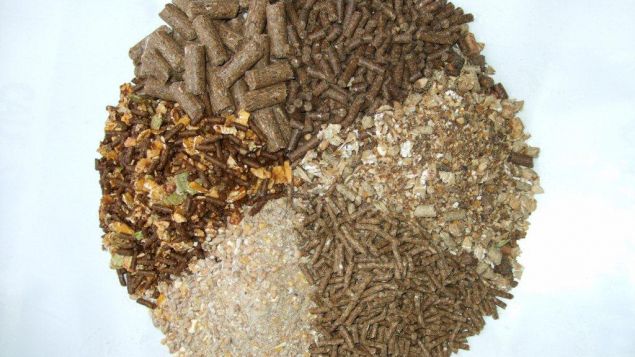

There are two considerable points when carbonhydrate formulations are discussed. One of them is fiber and the others are sugar- pectin and starch. (NFC)
As a result of the excessive fiber intake; some problems in depression of K.M, energy and microbial protein synthesis are going to be seen. Besides, as a result of the excessive NFC intake; acidosis, laminitis, abomasal displacement, low milk fat and such problems are going to be observed. In order to be able to avoid these, rate of NFC in the ration should be 35- 40 percentage, rate of NDF should be minimum 28 and rate of e- NDF should be minimum 21 percentage.
The duties of fiber are arranging rumen functions, protecting rumen ph via rumination and drool production and stimulating milk fat production. But in fact, it should be known that; excessive fiber intake causes energy gap and decreases in the rate of K.M.
The duties of NFC are providing energy for both Rumen microorganisms and animals, also composing propionate. But in fact, it should be known that; excessive NFC intake causes acidosis and such problems.
In carbonhydrate digestion, glucose arises as a result of fiber digestion, Acetat and Biturat volatile fatty acids consist and provide the consistence of milk fat. And in consequence of the starch digestion; glucose, lactate and propionate concur.
If a problem occurs in acidosis; decreases in milk fat and ph level are going to be seen and these decreases are going to cause from the non- produced Acetat and Brütat. And if a problem occurs in milk amount and protein; NFC and starch should primarily come to our minds.
Another important issue in carbonhydrate formulations is the particle size. The effect of particle size in roughage should be 2.5 cm for yield and 1 cm for silage.
The amount of ruminant animals is the most important point to consider. At least half of them should ruminate.
The used starch sources in ration, are as important as the particle sizes. If digestion speed is low, the acidosis risk decrease. Accordingly, because of the fact that; oat, barley and wheat are the fastest digestible starch sources which pose danger, should be given to animals as pulps. In this regard, more reliably; corn and sorghum should be both granulated.
As looking at the information above; e- NDF is one of the most important criterias to be considered and the minimum amount of it should be 21 percentage. If there is a low milk fat problem in the ration whose e- NDF rate is 23 percentage, this is going to mean that there are another problems to take into consideration such as;
Moreover, the rate of NDF in ration should be minimum 28 and NFC should be 35- 40 percentage. Besides, starch should be 20- 25 percentage.
Various rations’ e- NDF are in the percentage of 38 and NFC are about 30- 32 in Turkey. In order to provide milk efficiency, NFC should be increased while e- NDF is being decreased.
The importance of the criterias such as preparation of rations, weighment, mixing, shredding and proration is understood within these information.
Some failures or problems can occur about carbonhydrate formulations while weighing, mixing and feeding. There are some requirements in order to avoid these failures and prepair healthy rations which can be lined up as;
All of the processes that are mentioned above should be fullfilled in order not to face with unexpected issues.
Register to our newsletter in order to be aware of our announcements and news.
